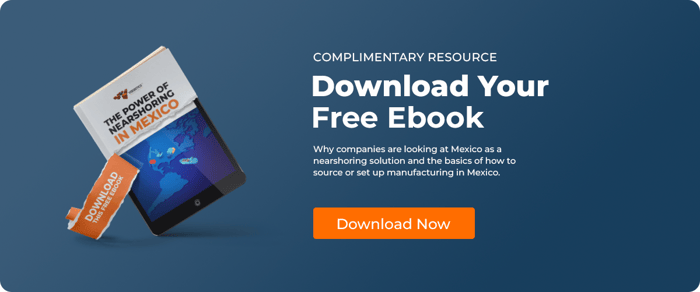In today's global marketplace, ecommerce companies face the challenge of navigating complex customs regulations and tariffs when shipping products internationally. However, the utilization of a strategic approach to Customs Section 321 provides a valuable opportunity to eliminate tariffs and optimize cross-border operations. This article will look into the regulations of Section 321 and guide ecommerce companies in leveraging this strategy to their advantage.
What is Section 321?
Section 321 is a provision under the U.S. Customs and Border Protection regulations that allows for duty-free entry of low-value shipments into the United States. By taking advantage of this provision, ecommerce companies can significantly reduce or eliminate import tariffs, resulting in cost savings and increased competitiveness.
How Section 321 Shipments Benefits Businesses in the United States
According to Section 321, shipments valued at $800 or less can enter the United States duty-free, providing an exemption that holds significant value for e-commerce companies. This particular provision proves especially advantageous for businesses engaged in importing finished products from China for fulfillment operations based in Mexico. By leveraging this strategic approach, these companies can effectively legally avoid substantial tariff costs, ultimately enhancing their profit margins and pricing competitiveness.
Moreover, it is important to note that Section 321 is not limited to a specific type or size of business. It is designed to benefit a wide range of companies, catering to their unique needs and circumstances. Regardless of the frequency or total volume of importation, this provision offers a valuable solution to businesses across various industries. It allows them to effectively respond to fluctuations in demand, particularly in the e-commerce sector, where rapid growth and temporary booms are common occurrences. With the ability to import low-value packages duty-free, businesses can remain agile and seize opportunities presented by such market dynamics.
Furthermore, recent analysis conducted on Section 321 affirms its positive impact on the importation process. It not only expedites the overall shipping process but also significantly reduces shipping costs. This valuable insight underscores the immense benefits that businesses can reap by leveraging this provision. It ensures a seamless and cost-effective importation experience, enabling companies to optimize their operations and stay competitive in today's dynamic market landscape.
Eligibility for Section 321
To qualify for Section 321, shipments must meet certain criteria, including the $800 or less value threshold. It's crucial for ecommerce companies to accurately calculate the value of their shipments and ensure compliance with customs regulations to take full advantage of this provision.
Various types of shipments can be eligible for the Section 321 customs exclusion, including individual consumer orders, small parcels, and low-value goods. It is important to note that there are specific shipping limitations under Section 321 that need to be considered. Two key limitations have emerged under Section 321, including the $800 shipment cap and single shipment per day requirement. This means that shipments with a value exceeding $800 will not qualify for the customs exclusion provided by Section 321. Additionally, only one order per day can benefit from the tariff exemption, regardless of the carrier or freight forwarder used. However, it is worth noting that merchandise imported through the mail is exempted from these limitations. This exemption applies to shipments sent through postal services, allowing them to still qualify for the Section 321 customs exclusion, regardless of their value or frequency. It is important to adhere to these limitations and exemptions to ensure compliance with Section 321 regulations. Understanding the eligibility criteria and the specific shipping limitations helps ecommerce companies determine which shipments can benefit from the tariff exemption under Section 321. It is also crucial to note that simultaneous application for Section 321 using different entities is forbidden, meaning that companies cannot attempt to bypass the limitations by submitting multiple orders under different names or entities.
Additionally, it is vital to recognize that not all goods are eligible to take advantage of Section 321 filing due to the oversight of various regulating agencies. Products subject to inspection and clearance by agencies such as the U.S. Food and Drug Administration (FDA), Food Safety Inspection Service (FSIS), National Highway Transport and Safety Administration (NHTSA), Consumer Product Safety Commission (CPSA), or the U.S. Department of Agriculture (USDA) may have different eligibility requirements. Consulting with a trusted customs broker to define and classify which products could represent great savings with Section 321 is essential. This step helps to ensure that the goods comply not only with the financial and frequency limitations but also adhere to the regulatory standards imposed by these agencies, which can significantly impact the feasibility of filing under Section 321.
How to Use Section 321 to Eliminate Tariffs
Ecommerce companies can establish partnerships with suppliers in China to buy finished products and send to Mexico. This strategic sourcing enables them to take advantage of lower production costs while ensuring compliance with customs regulations.
To optimize cross-border operations, ecommerce companies can contract with a 3PL warehouse or fulfillment center near the US-Mexico border. This proximity allows for efficient order processing and streamlined shipping to US customers.
The process begins with sourcing products from China, followed by importing the product into Mexico through US or Mexican Ports. The shipment will be classified as “in-bond" so that they are not technically imported into the United States or Mexico. Once the product is delivered, it is stored in a bonded warehouse on the Mexico side of the border. When an order is placed online from a US customer, the product is labeled appropriately and shipped from the Mexican warehouse across the border into the US. From there it is shipped to the customer's doorstep, taking advantage of Section 321 $800 de minimis threshold to eliminate tariffs.
What are the benefits of Section 321 for small businesses in a post-COVID-19 environment?
In a post-COVID-19 environment, small businesses can greatly benefit from Section 321 by taking advantage of its various benefits. Firstly, this provision allows for duty-free and tax-free importations of small shipments with a value not exceeding $800. By utilizing this opportunity, small businesses can significantly reduce their import costs, including the expenses associated with tariffs resulting from the US-China trade war.
Moreover, Section 321 streamlines the bureaucratic customs process and minimizes the time spent on clearing shipments. Many documentation tasks can now be automated, enhancing efficiency and reducing delays. Additionally, there is improved sharing of crucial information, further contributing to faster customs clearance.
By leveraging Section 321, small businesses can realize cost savings, which can be passed on to their customers in the form of reduced product prices. This approach not only helps in attracting customers but also strengthens customer engagement and relationships. Faster delivery times, facilitated by streamlined customs processes, contribute to enhanced credibility and trust in the business.
The Strategic Approach: Import and Fulfillment
Step 1: Importing products from China to Mexico
The first step is to import products from China to Mexico, ensuring compliance with customs regulations and documentation requirements. By carefully managing the importation process, ecommerce companies can avoid unnecessary delays and complications.
Step 2: Engage a Bonded Warehouse
Engaging with a 3PL in Mexico near the US-Mexico border allows for streamlined fulfillment operations. The warehouse serves as a hub for storing the products and processing customer orders. By strategically locating the warehouse near the border, ecommerce companies can reduce shipping time and costs when fulfilling orders to US customers.
Step 3: Leveraging Section 321 for tariff elimination
When an order is placed by a US customer, the product is shipped directly from the Mexican warehouse to the customer's doorstep. Since the shipment value is below the $800 threshold, it qualifies for tariff exemption under Section 321. This enables ecommerce companies to offer competitive pricing to their US customers while reducing import costs.
Reducing delays in Customs Processes
Section 321 plays a vital role in reducing delays in customs processes. This regulation enables automation of documentation, eliminating the need for manual paperwork and bureaucratic processes. By leveraging automated systems, the time spent on customs procedures is significantly reduced, allowing for a more efficient and expedited clearance process.
Additionally, Section 321 fosters better sharing of vital information among relevant parties involved in customs processes. This improved exchange of information between customs authorities and importers/exporters ensures that everyone has access to the necessary data promptly. By facilitating the seamless flow of information, delays caused by miscommunication or data gaps are minimized, further contributing to the reduction of customs processing times.
Compliance and Documentation Requirements
While Section 321 offers significant benefits, compliance with customs regulations and documentation requirements is crucial. Ecommerce companies need to ensure accurate and complete documentation, including commercial invoices, packing lists, and customs declarations. Working with experienced logistics partners and customs brokers, such as Visigistics, can help businesses navigate the compliance process smoothly and avoid potential issues.
How should Section 321 be declared and what are the best practices?
To properly declare Section 321, it is essential to comply with the $800 cap and provide specific information in the declaration. This information should include the number of goods, their country of origin, the shipper's details, and the consignee's details. It is crucial to directly notify the U.S. Customs and Border Protection (CBP) when applying for a Section 321 entry, particularly when an electronic manifest (eManifest) is required. It is important to work with a customs broker and freight forwarder that is experienced in this process and can assist in avoiding penalties that may arise from multiple applications on a single day.
In terms of implementing best practices, a well-organized supply chain is of utmost importance. This includes conducting due diligence and establishing effective communication channels. To ensure smooth operations, it is recommended to specify shipments and promptly notify partners when a Section 321 request is required. By doing so, unnecessary requests can be avoided. Additionally, maintaining a formalized system for auditing and tracking all entries is essential. Furthermore, it is advisable to limit the involvement of multiple brokers and middlemen to minimize confusion and delays in the process. Monitoring communication channels is crucial to ensure that all relevant information is received and acted upon in a timely and effective manner.
How can businesses pass the savings from Section 321 on to customers?
Businesses can pass the savings from Section 321 on to customers by offering reduced prices for the product. This is made possible due to the cost benefits obtained from the streamlined process of Section 321. Additionally, businesses can enhance customer engagement and foster stronger relationships by delivering products at a faster pace. By optimizing their restocking processes to align with the $800 cap, businesses can further reduce their logistics costs, allowing for greater savings that can be passed on to customers.
What are the risks of non-compliance with Section 321?
Non-compliance with Section 321 poses various risks. Firstly, there is the potential for delays in processes and operations. Failing to adhere to the requirements outlined in Section 321 may lead to bureaucratic hold-ups, hindering the smooth flow of business activities.
Aside from delays, penalties are also a consequential risk. The passage emphasizes the importance of being organized and accurate when filing to meet all the obligations of Section 321. Failure to do so can result in penalties, which can have financial implications for businesses.
Furthermore, non-compliance with Section 321 might necessitate the fulfillment of all the overlooked requirements at a later stage. This not only adds an additional burden but can also lead to further delays and potential penalties down the line.
Another aspect to consider is the need to comply with existing rules, such as intellectual property protections. By not adhering to these regulations, businesses expose themselves to legal risks and potential infringements on intellectual property rights.
Visigistics: Your Partner in Logistics Solutions
Partnering with Visigistics provides ecommerce companies with the expertise and support necessary to navigate the complexities of cross-border operations. As a trusted logistics consultant, Visigistics offers tailored eCommerce fulfillment solutions and industry insights to optimize supply chain operations, including importation, manufacturing, and fulfillment. With a deep understanding of customs regulations and logistics requirements, Visigistics helps businesses leverage strategies like Section 321 to streamline operations, minimize costs, and enhance their competitive advantage. We have multiple providers in Mexico that can warehouse your goods to support Section 321 de minimus exemptions. Contact us today to learn more and talk about your specifics.
Learn More About How to Work in Mexico
If you're interested in expanding your operations in Mexico and want to read more about working in the Mexican market, we recommend you to visit the following articles:
- How to Ensure Successful Freight Shipping from Mexico to USA: Discover the essential considerations and best practices for shipping goods from Mexico to the United States. Learn about key requirements, documentation, customs procedures, and strategies for optimizing your freight shipping operations.
- The Importance of Pedimento and Form 7525-V: Gain insights into the significance of Pedimento, the official customs document in Mexico, and Form 7525-V, the U.S. customs form. Understand their roles in facilitating smooth cross-border trade and ensuring compliance with customs regulations.
- How to Overcome Issues with Cross Border Logistics: Explore common challenges and potential solutions when dealing with cross-border logistics between Mexico and the United States. Discover strategies for managing transportation, customs clearance, regulatory compliance, and supply chain complexities to overcome hurdles and achieve operational excellence.
In these articles, you'll gain valuable knowledge and practical tips to navigate the intricacies of working in Mexico. Visigistics is here to provide comprehensive logistics consulting services and support you in your journey toward successful cross-border operations. Contact us today to discuss whether your company is eligible for the 321 exemption and unlock the full potential of your ecommerce in Mexico.
If you are interested in learning more about manufacturing in Mexico as an alternative to manufacturing in China, be sure to read our blog post How to Find Manufacturers in Mexico, or download our eBook, The Power of Nearshoring in Mexico.
Frequently Asked Questions:
What is Section 321 Entry Type 86?
Section 321 Entry Type 86 is a de minimis shipment provision that permits duty-free importation for low-value packages. It encompasses freight, land shipments, and all port entries, allowing for the expedited clearance of goods through customs. This provision specifically mentions the use of CBP's Automated Commerce Environment (ACE), emphasizing the importance of streamlining and accelerating import processes.
Who is Section 321 for?
Section 321 is designed to benefit all types of businesses, irrespective of their importation frequency or volume. This provision serves as a valuable tool for businesses to effectively manage fluctuations in demand, making it particularly advantageous during periods of sudden e-Commerce growth. Implementation of Section 321 enables businesses to quickly adapt to changing market conditions and meet consumer demands efficiently. Furthermore, recent studies have demonstrated that utilizing Section 321 can expedite the import process and reduce overall shipping expenses for businesses.
Is Section 321 required for businesses?
Section 321 is beneficial for all businesses, irrespective of the frequency or total volume of importation, due to its ability to accommodate shifts in demand. This provision enables businesses to swiftly adapt to changes such as an increase in e-Commerce activity, even if it is temporary in nature. Recent assessments support the notion that Section 321 plays a crucial role in expediting processes and reducing overall shipping expenditures for businesses.
What are the regulations and requirements for Section 321 moving forward?
The regulations and requirements for Section 321 moving forward entail businesses staying vigilant for any updates and conditions as specified by CBP. Key information on Section 321 shipments is typically required by CBP before arrival at the entry port, and there may be a need for clarifications on certain modalities with the growth of services. The list of qualifying goods and companies for the program is expanding, including items like food and cosmetics that were previously governed by Partner Government Agency (PGA) regulations. CBP is intensifying scrutiny on Section 321 entries by ensuring compliance with maximum value thresholds and leveraging price estimates and different models to determine indicative values. Exceptions and exemptions apply to certain products such as tobacco, alcohol, goods under the anti-dumping and countervailing duties (AV/CVD) regime, and items subject to inspection, quotas, or Federal Excise Tax.
What role does technology, such as Electronic Data Interchange (EDI), Direct Trader Input, Advance Cargo Information Systems, and the internet, play in supporting the implementation of Section 321?
Technology, including Electronic Data Interchange (EDI), Direct Trader Input, Advance Cargo Information Systems, and the internet, plays a vital role in supporting the implementation of Section 321. These technologies have revolutionized the customs clearance process for low-value shipments by providing efficient and secure means of data exchange between customs authorities, clients, and brokers.
The implementation of Section 321 benefits significantly from EDI systems, which offer a structured approach for secure data exchange. EDI facilitates the smooth transfer of information between tax administrations and clients/brokers by defining data formats and characteristics in an easy-to-process manner. This ensures that relevant data is transmitted accurately and securely, streamlining the customs declaration process.
Direct Trader Input systems empower clients and brokers to submit customs data directly to customs authorities through a single-window interface. This direct interaction eliminates bureaucratic hurdles and enables instant validation and printing of declarations for low-value shipments. By utilizing these systems, shippers and brokers can efficiently provide customs authorities with the necessary information, expediting the clearance process.
Advance Cargo Information Systems have automated reporting and declaration processes, simplifying the importing, declaring, and validation of low-value shipments. These systems enable clients and brokers to make operational arrangements in advance, ensuring seamless processing of Section 321 transactions. The automation and accuracy provided by advance cargo systems contribute to increased efficiency and compliance in customs procedures.
Furthermore, the internet serves as a cost-effective and user-friendly technology that facilitates seamless connectivity between clients and customs authorities. With Internet access, clients can securely transmit data and information about their low-value Section 321 shipments from any location. This connectivity streamlines communication and verification processes, enabling customs authorities to review and validate shipments without the need for physical visits.
What are some proposed changes to Section 321 due to global trade dynamics, including concerns about oversight, trade reciprocity, and de minimis thresholds?
Proposed changes to Section 321 in response to global trade dynamics aim to address concerns regarding oversight, trade reciprocity, and de minimis thresholds. The growing number of imports into the United States has raised alarms about the lack of adequate controls and oversight over the millions of parcels entering the country daily. Advocates for reform argue that current loopholes make it easier for individuals to smuggle in harmful and illegal products, including items associated with intellectual property theft, forced labor, and other dangerous practices.
One specific concern is the disparity in de minimis value thresholds between the United States and other countries, such as Canada, China, the United Kingdom, and Europe. The current de minimis value of $800 in the US is significantly higher compared to these other nations, where thresholds range from $7 to $150. This discrepancy can lead to unfair trade advantages and create challenges in enforcing trade reciprocity with these trading partners.
In light of these issues, there have been proposals to reform Section 321 to address the lack of oversight, improve controls on imports, and ensure fair trade practices. By revisiting the de minimis thresholds and enhancing monitoring mechanisms, policymakers aim to create a more balanced and transparent system that promotes trade reciprocity while safeguarding against the entry of illicit and harmful goods into the US market.
How does Section 321 allow businesses to send consignments directly to consumers duty-free through shipping companies like FedEx, USPS, and UPS?
Section 321 enables businesses to send consignments directly to consumers using shipping services such as FedEx, USPS, and UPS. By leveraging Section 321, businesses can take advantage of existing trade regulations to ship packages to consumers without incurring duties or taxes. This means that the business can benefit from the duty-free status of Section 321 when sending the final package to the consumer, thus reducing costs and streamlining the shipping process.
Can you clear Section 321 entry in any port of the United States?
Yes! Clearing a Section 321 entry in any port across the United States is indeed feasible. To facilitate this, you should consult with a knowledgeable customs broker. For instance, at companies like Visigistics, we utilize their capability to file remotely which significantly enhances the efficiency of logistics, allowing for quick customs clearance in any port, regardless of location or time.
Are there goods that are not permitted to be filed under Entry Type 86?
Yes, there are specific categories of goods that cannot be processed using Entry Type 86. These include items that are under Antidumping/Countervailing Duties (AD/CVD), products that fall under quota restrictions, specific types of tobacco and alcohol, and any goods that are subject to taxation by the Internal Revenue Code.
Do duties, taxes, and fees apply to Entry Type 86?
Entry Type 86 shipments are generally exempt from duties, taxes, and fees. However, if the importation involves items that necessitate the collection of specific fees, such as agricultural fees, the appropriate filing would need to be either a Type 01 Consumption entry or a Type 11 Informal entry to handle such fee collections.
Is a POA (Power of Attorney) required for brokers to file Entry Type 86?
To address the inquiry regarding whether a Power of Attorney (POA) is necessary for brokers to process Entry Type 86, it is indeed required. For the effective submission of this entry type, customs brokers must obtain authorization to manage customs duties for the owner, purchaser, or consignee of the shipments covered. They must have a valid POA that enables them to conduct these customs transactions on behalf of the respective parties.
Will an IOR number be required for Entry Type 86?
The necessity of an Importer of Record (IOR) number for Entry Type 86 depends on specific requirements set by Partner Government Agencies (PGAs). It is not automatically required but must be provided if stipulated by the relevant PGA regulations.
Who else may qualify as "the one person"?
With respect to unsold merchandise, under the latest administrative changes, besides other entities, the foreign seller who possesses the unsold goods can be considered the "person" in question if they make their identity known to Customs and Border Protection at the importation point.
What is Section 321 daily restriction?
Section 321 is a regulation that permits shipments of negligible value to be imported into the United States free from duties, taxes, and additional importation fees each day.
What are the requirements for Section 321 entry?
To qualify for a Section 321 entry, the value of the shipment must be $800 or less. Additionally, the shipment cannot be part of multiple consignments that collectively fall under a single order or contract.
Is duty-free logistics possible?
Yes. Achieving duty-free shipment is primarily facilitated through leveraging Section 321 Type 86. This provision allows for tax-exempt customs clearance under specific conditions. Partnering with a proficient customs broker and adopting an effective strategy can substantially reduce the typical delays associated with processing, enhance security measures, improve relations with the Customs and Border Protection (CBP), and significantly cut down on overall logistics expenses.

-1.png)





